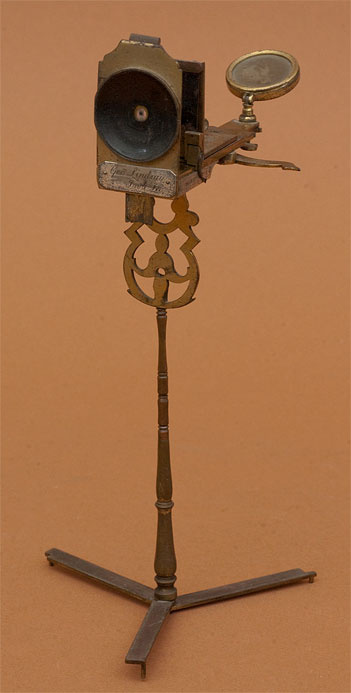 |
|||||
 |
 |
||||
 |
|||||
 |
 |
||||
"(a) To bring the magnifiers closer to the eye."
"(b) To obtain a larger angle of vision."
"(c) To make the lenses as well as the objects capable of being shifted immediately by entirely removing the trouble of screwing and unscrewing, which employs much more time than viewing the objects. The structure has perhaps to be large enough for all purposes required, yet will reduce so as to be conveniently portable that it may be easily used in a field or garden." *
The George Lindsay microscope consists of a blackened eyecup, objective lenses mounted on a sliding brass dove-tail frame, and a unique focusing mechanism for mounted samples. The microscope sits on a brass tripod stand that can be disassembled and folded for storage. It has a sample holder designed for samples mounted on (bone or brass) microscope slides. The holder is on a sliding frame controlled by a side lever. Rotating the lever away or toward the body moves the sample further from or closer to the lens, thus focusing the sample. A mirror can be attached to the distal end of the microscope.
The entire microscope is mounted on a thin, turned brass pillar with folding tripod legs, however the stand is too unstable to be useful. This deficiency essentially makes the microscope a hand-held magnifier. The entire instrument can be disassembled and folded into a small carrying case and, according to Turner, was sometimes referred to as a "snuff-box" microscope. The case and accessories are now missing from this specimen. On the front plate is a silver plaque engraved with "Geo Lindsay - Inv & Fec". The number "41" hand stamped on the back of the front plate is probably the serial number. The RMS has No.22 of Lindsay's microscope.
*Clay and Court
Microscope Featured 11/2011, 12/2024

